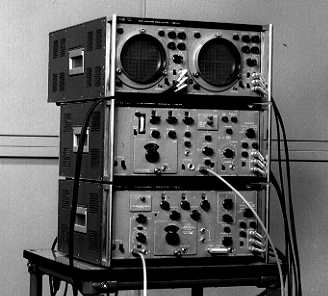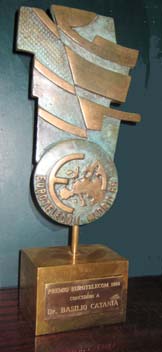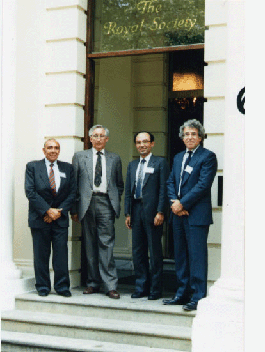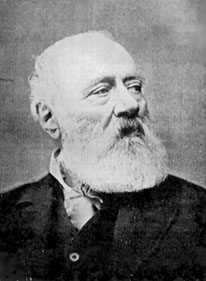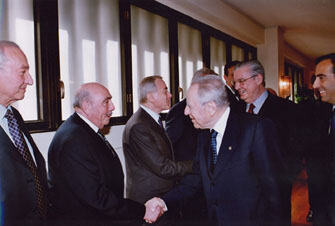|
Following
the above achievements, he took a leading role in the
founding and management of international conferences, such
as the European Conference on Optical Communication (ECOC)
and the Integrated Optics and Optical Communication
Conference (IOOC). He was invited to lecture and/or chair
many conferences around the world and was editor of the
900-page book "Optical Fiber Communication", published by
McGraw Hill in the USA, in 1981. Noteworthy was the invited
lecture "Optical Technology and Network Requirements" given
at the Royal Society in London, on 29 June 1988. |
First buried optical cable in Turin, 1977 |
|
He also contributed to set up and manage European research projects, particularly the Research on Advanced Communications in Europe (RACE). For this latter, on March 1984, he prepared the first introductory document; then, as chairman of the Telecom Operators Research Group (TORG), he contributed to the preparation of the RACE workplan and, finally, as a member of the "Integrated Broadband Communications' Strategic Audit 1988" he contributed to the evaluation of the results and the recommendations for further actions. In recognition of these contributions, in 1988, he was awarded the first "Eurotelecom Prize", by H.M. the King of Spain, on behalf of the European Union. For his research on optical fiber systems, he also received the Gold Medal of the City of Milan, in 1985, the fellowship of the Institute of Electrical and Electronic Engineers (IEEE), in 1990, and the Marconi Prize of the Italian Electrotechnical Association, in 1991. | |
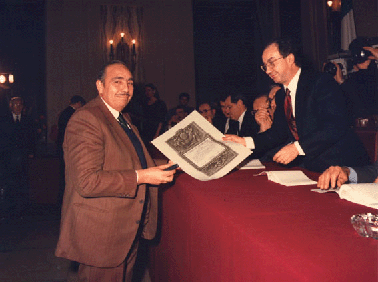

Basilio Catania receives the Gold Medal of the City of Milan (Left) and the "Eurotelecom Prize" from H.M. the King of Spain, Don Juan Carlos 1° (right)
